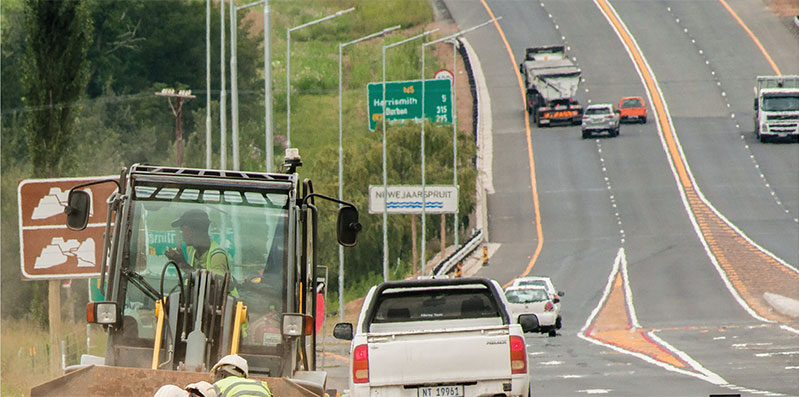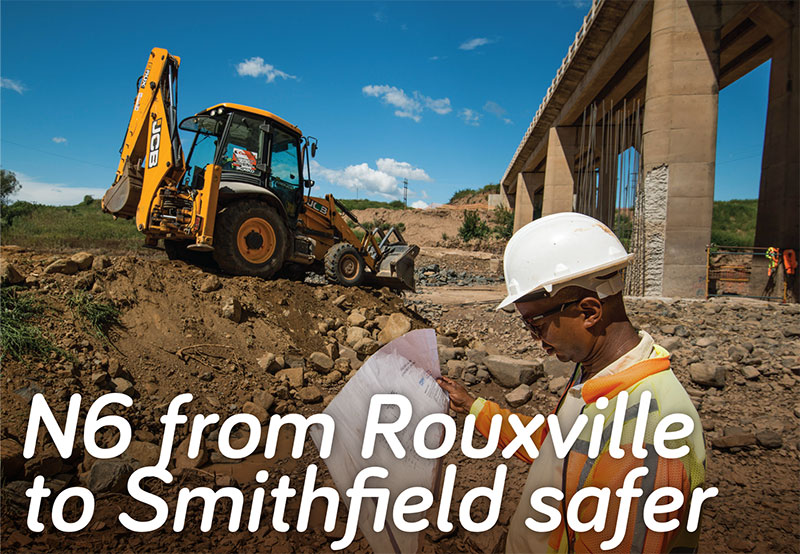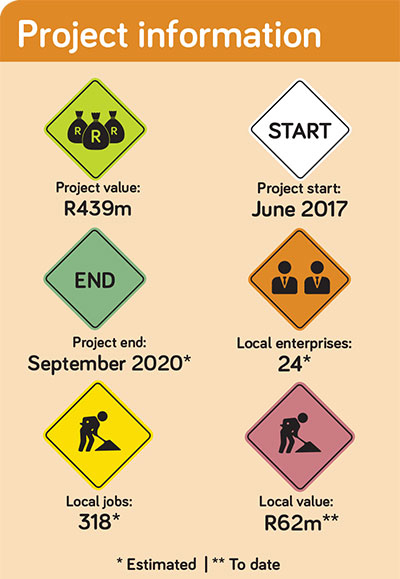Women, youth scored from N5 upgrading
While the big yellow machines have moved off site upon completion of the upgrading of the N5 between Harrismith and Industriqwa, a legacy of empowerment remains with scores of youth and women who have benefited from jobs during the construction.
Women and youth earned more than R11.2m during construction.
And 17 sub-contractors (SMMEs) from the community undertook some of the construction works under the supervision of the main contractor.
The original tender amount was R292m. The final contract amount was R343m due to relocation of services and delays caused by inclement weather.
The contract involved a 6km section of the N5 from the N3/N5 interchange to Industriqwa. The project included the construction of a new interchange where Murray Street links the N5 to the Harrismith CBD.
SANRAL Eastern Region Project Manager Andrew Ssekayita says a major reason for the improvement had been the high volume of traffic between QwaQwa and Harrismith.

The project, which commenced in October 2015, involved grade separation and new interchange ramps at the N5/Murray Street intersection; widening the road to four lanes and corresponding widening of four bridges; construction of a new two-lane bridge over the Wilge River at Murray Street; closure of an intersection on the N5 and provision of
a new access road from Murray Street; as well as provision of taxi lay-bys and pedestrian facilities at the interchange.
SANRAL left the historical single-lane Hamilton Bridge over the Wilge River intact and instead constructed a new double-lane bridge next to the current one on Murray Street.

Work is on track for the upgrading of a 34-kilometre section of the well-used N6 between Rouxville and Smithfield in the Free State.
The contract was awarded by SANRAL to construction firm WBHO and work began in June 2017. The expected completion will be the end of September 2020. The upgrade entails mostly realignment of the existing road.
“While the horizontal alignment is mainly on the original footprint, there is a substantial amount of vertical realignment being conducted,” said WBHO contract manager Russell Deenik. This - achieved by a number of cuttings - smooths out the undulations on the original road. It required drilling and blasting.
“Rock conditions vary from cutting to cutting, necessitating careful blasting techniques to obtain optimal fragmentation while conserving explosives and preventing fly-rock,” Deenik said.
The result of the vertical realignment will be fewer blind rises on the route and a longer field of vision for motorists, generally improving the safety of the road.
It will also reduce the number of climbing lanes necessary to accommodate overtaking of slower traffic. In another important safety improvement, the road is being widened to 12,4 metres, including a generous shoulder on each side.
Most of the road is being constructed in half-widths, where the traffic is moved onto a widened shoulder on the one side of the road while work continues on the other. Stop-go arrangements have been installed for traffic for single-lane sections of about four kilometres at a time.
The main bridge on the route is over the Caledon River, and this was widened on the left and right to accommodate the new road width. To do this, piling was driven into the riverbed for new sub-structure footings, and both the piers and the abutments were extended on each side using precast beams to carry the extended bridge decks.
Closer to the Rouxville side, the smaller bridge over the Eldorado River was demolished and rebuilt to larger dimensions.

A significant challenge on the project has been the prevalence of mudstone material at road-bed level at various points of the route. As the material is not fit for road-building, an extra 300 to 450 mm was removed in places below road-bed level, and replaced with a pioneer rock layer.
Six burrow pits - including the main quarry - are spread evenly along the route and provide all the required material. To facilitate recycling, the existing road’s base and surfacing was reclaimed and stockpiled, to contribute 20% of the new sub-base layer after it has been mixed with new material.
In terms of targeted labour, the labour force was sourced locally from the Xhariep District Municipality. The project has created employment for 318 local workers to date. There is a similar focus on creating opportunities for local enterprises, which make up 24 of the 31 sub-contractors on site.
SANRAL Project Manager Jason Louw says that everything’s on schedule. “The contractor is progressing well and is on track with the programme.”
BUILDING SOUTH AFRICA THROUGH BETTER ROADS
HELLO FREE STATE 2019